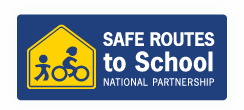Photo courtesy of www.mnn.com
This week we're reminded that for For Pedestrians, Cities Have Become the Wilderness--and The Pedestrian Is a Fragile Species in that wilderness. But some places are taking measures to save the pedestrian from extinction. There are Pedestrian crosswalk, other safety measures on the table for stretch of Ann Arbor-Saline Road where woman died, and a Panel looks to boost pedestrian safety one year after death of 8-year-old Max Wipfli in Wisconsin.
And that's not all. There's a Bike-pedestrian trail plan coming together for Shawano, NLR’s Park Hill to hold ‘walkability workshop’ in Arkansas, the City plans to build sidewalks in older neighborhoods in Las Vegas, and a Breakthrough for Norfolk pedestrian crossing campaigners. Drivers, bicyclists and pedestrians can take the high road to safety in Pittsburgh, and a New Fort Myers Beach committee tackles pedestrian safety. Heck, It’s now Pedestrian Sunday! in Bhutan. Bhutan!
Of course, there's always a dingy lining to the silver cloud--particularly outside the US this week. In India Bhikaji Cama Place a symbol of ‘utter disdain for public property’: Accessibility audit is necessary! And in Namibia: Pedestrians Should Change Mindset according to this article-- and admit roads are for cars, not people. It makes you wonder, Should Pedestrians be Forced onto Roads? Maybe not, but they should at least have sidewalks for their own--perhaps this is why Pedestrians, drivers plead for bicyclists to stay off sidewalks.
Of course, bikes on sidewalks aren't nearly as dangerous as SUVs that blow through crosswalks, like in the case of the North Hollywood pedestrian fatally struck crossing street is ID'd.
It's situations like this that lead us to wonder Can a re-imagined and walkable downtown save America? (or at least keep it safe?) And if so, Is City Council About to Trade Away Philadelphia’s Walkability Advantage? Maybe Philadelphia needs to be reminded that ‘You have to become the anti-strip mall’ to provide good walkability, and of the Links studied between walkability of neighborhoods and obesity.
Finally this week, we learned that in Prescott, Arizona, a DIY crosswalk provider got the recognition he deserved as the City designates downtown pedestrian walkway as 'Sam Steiger Crosswalk'
Oh--one more thing: Submit Your Questions for Ray LaHood to answer about walkability and pedestrian issues.







































